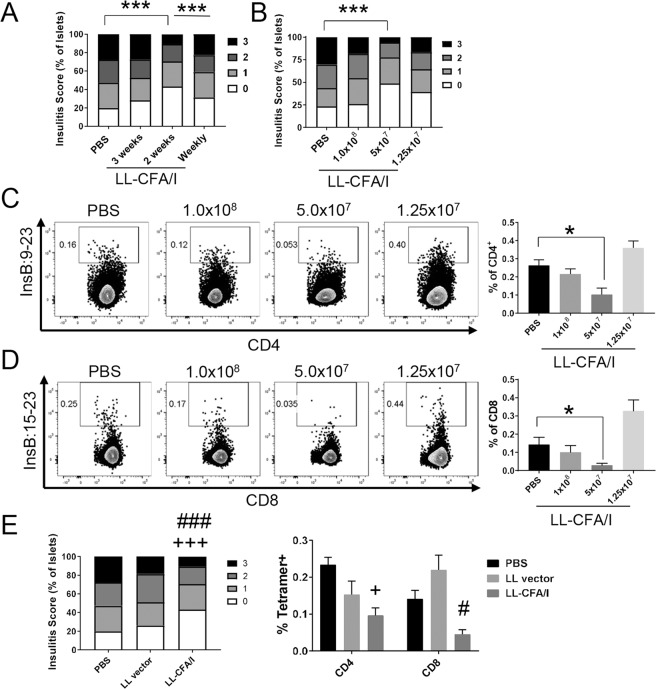Figure 2.
Optimization of therapy with LL-CFA/I. Four wk-old NOD females were dosed with LL-CFA/I or PBS in varying doses or frequencies. At 11 wks of age, 1 wk after the final dose, mice were euthanized and insulitis levels examined. (A) Frequencies of observed insulitis scores of mice dosed with 5 × 107 CFUs every 1 (n = 17), 2 (n = 17), or 3 wks (n = 7); ***p < 0.00005 as indicated between PBS and LL-CFA/I treated every 2 wks and between mice treated weekly and every 2 wks with LL-CFA/I. (B) Frequencies of observed insulitis scores of mice dosed with 1 × 108 (n = 7), 5 × 107 (n = 17), or 1.25 × 107 (n = 7) CFUs of LL-CFA/I every 2 wks; ***p < 0.00005 as indicated between PBS and 5 × 107 CFUs LL-CFA/I. Insulin-specific (C) reduction in diabetogenic CD4+ and (D) CD8+ T cells from females treated with the various doses of LL-CFA/I were observed using tetramers specific to InsB:9-23 and InsB:15-23 (n = 5/group), respectively; *p < 0.05 between PBS and LL-CFA/I (5 × 107 CFUs). (E) Frequencies of observed insulitis scores (n = 8/group), left, and summary of insulin-specific CD4+ and CD8+ T cells from mice dosed with 5 × 107 CFUs of LL-CFA/I, LL vector, or PBS every 2 wks (n = 7/group), right; +p < 0.05 and +++p < 0.00005 between LL-CFA/I and PBS; #p < 0.05 and ###p < 0.00005 between LL-CFA/I and LL vector. Data are represented as means ± SEM.

